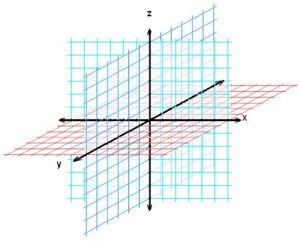For some reason, I was doubting myself on the plural of axis. I confirmed my recollection via googling that axes is the spelling of the plural of ax, axe, and axis, although the pronunciation of the plural is different.
Oddly enough, my topic is including each axis, of X, Y, and Z, still three items. My brain makes connections most others don’t, but I think of an axis of axes, AKA using an ax to represent an axis. But that is a rabbit trail distracting from the intent of this post.
Yesterday, I wrote a review of +Jason Paul McCartan’s The Graveyard at Lus, for White Star. In that PDF, he briefly mentions position in space. While reading about the graveyard creation concept, I had an idea for determining the X, Y, and Z axis of a ship in a hex in space. I’m not sure what the three dimensional hexagon would look like. For example, a square in three dimensions is a cube. From this site I googled, it appears that a soccer ball or buckminsterfullerene is the closest thing.
Anyone who has watched Wrath of Khan will know why the Z axis is important.
My idea is to use 3d6, one for each of the X, Y, and Z axes. Ideally, a different colored die, or based on their position when they land.
The X axis is left to right, the Y axis is top to bottom, and we have two dimensions on a page or screen covered. The Z axis adds the bit that raises above or sinks below the page, or the things that appear to fly out at you in a 3-D movie.
If using dice of different colors, specify which is which before the roll. If using position, for example the one most to the left is X, most to the top is Y, and the remaining is Z, or designate the position to your liking. A third alternative is to roll one die three times, specifying which die is which axis, but that slows things way down.
Since we will be using 2-D maps on paper or screen, X will be running right to left on the page, Y will run top to bottom, and Z will rise above the page or sink below it.
Each die will use 1-2, 3-4, and 5-6 for 3 options for each. There’s no mechanic in this for dead center, but say if all three die come up 3 it means dead center. Or if they do come up all 3’s, roll a control die and if it comes up 3, or the designated number, it means dead center. That would be more for placement of a single item in a hex. This mechanic would work better for relative positions of one ship encountering another.
For the X axis:
- 1-2 = to the left (For example 1 could be far left, 2 middle left.)
- 3-4 = to the center (For example 3 could be left of center and 4 right of center.)
- 5-6 = to the right (For example 5 could be middle right and 6 could be far right.)
For the Y axis:
- 1-2 = to the top
- 3-4 = to the center
- 5-6 = to the bottom
For the Z axis:
- 1-2 = higher in the hex
- 3-4 = to the center
- 5-6 = lower in the hex
The above only allows for rough approximations, and is probably good enough for a fast-paced game. Use another roll to determine distance, etc.
If more precision is wanted for more exact placement of an item in a space hex, determine the size of the hex and divide it into increments and pick an appropriate die to roll. For example, figure out how to divide the size of the hex by 100 and roll three percentile dice, i.e. 3d%, one for each axis. You may narrow a million cubic miles down to 10,000 cubic miles of space, and then repeat the process to narrow down to the 100 cubic miles, and once again, for where in that 100 cubic miles is the one cubic mile of space with the object in question. If the item is large enough, perhaps you don’t need to keep rolling, but what if it is a lost wedding ring? You’ll be rolling a long time. I think it would be good to just have the approximate location with the 3d6 method and just use roleplay and skill checks/challenge rolls to find the item.
The cool thing about the 3d6 for three axes positioning works for air travel/combat, and for elevation above or below ground, or above or below water, etc.
One could also take the teleport spell from AD&D and the percentage change to teleport high or low, but that does not allow for X and Y.
How would this work? Let’s take the example of two ships in White Star one with the players, the other a random encounter. Roll 3d6 for relative position of each, and determine approximate distance that each detects the other. The Graveyard at Lus has suggestions for how to handle distance with scanners. Generally, the GM’s will have an idea of what scale they are using, and will have an idea of what dice to use to determine distance.
There are a lot of variables for determining distance, including damaged scanners, cloaking devices, etc. I think rules for encounters and pursuit and evasion of pursuit have enough ideas to cover determining distance, so I won’t come up with something new at this point.
This is a bit of crunchiness in RPG’s that you can use as desired; meaning use it, modify it, or don’t use at all.
If this was helpful to you, please comment!


